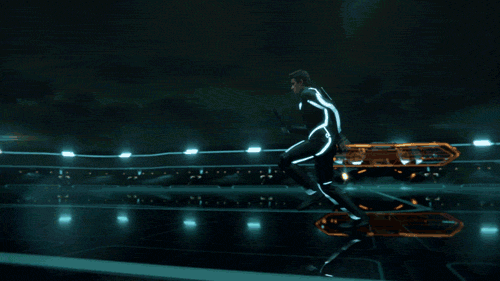All too often, when a film gains a following or performs well at the box office, the inevitable talk of a sequel is right around the corner. Other times, it takes a while for that continuation to arrive… or just drop in out of the blue!
This weekend Glass hits theatres, the first wears-it-on-its-sleeve sequel to M. Night Shyamalan’s Unbreakable, nearly 20 years after that film was released. Of course, it was just two years ago that Split landed, with its surprise!Bruce Willis ending that revealed an Unbreakable continuation was in the cards after all these years. In this vein, we thought we’d spend today’s Friday Five revisiting sequels that either took a very long time to finally grace our screens, or straight-up came at us out of left field…
Mad Max: Fury Road
The great George Miller kept himself busy in the interim (racking up awards and nominations for the Babe films being a pinnacle), but it took the Aussie filmmaker thirty years to return to the post-apocalyptic franchise that made him an internationally known talent. Who knows what happened to Max Rockatansky in the ensuing time after he saved a bunch of kids from Tina Turner’s entourage in 1985’s Mad Max Beyond Thunderdome, but when he returns in the form of Tom Hardy in this it’s a breath of fresh air. Which is to say, in comparison to the big, gulping gasp of fresh air that is Charlize Theron, whose unstoppable steely rage as Imperator Furiosa completely steals the show. Miller’s long-awaited sequel also became the first Mad Max flick nominated for the Oscar for Best Picture. *mic drop*
Tron: Legacy
Not unlike Fury Road, it took nearly three decades for Disney to reactivate the groundbreaking computer-based scifi franchise it had launched as a sleeper hit in the summer of 1982. On the visual end, Tron Legacy appeared to be everything we nerds had hoped for all that time – as dazzling as before, but perfectly updated for the eye candy sensibilities of the 21st century. (And that Daft Punk score!!) On the story side, it suffered; Steven Lisberger’s original could never be accused of being a deep exercise in emotions, but still this time out there did seem to be a certain detachment, even from the nostalgia. The somewhat stodgy de-aging CGI on Jeff Bridges in several parts didn’t help, nor did a very-late reveal of a secret character identity that should have been a bigger deal. Olivia Wilde’s outspoken, idealistic Quorra is a delightful addition, though!
Drunken Master II
Jackie Chan had been an international superstar for decades before he was widely discovered by U.S. audiences in the 1990’s; his first Drunken Master collaboration with legendary director and fight choreagrapher Yuen Woo-Ping was released in 1978. Many years (and many, many, many more films) later, Chan would make this thoroughly ass-kicking sequel, just a couple of years before his American visibility blew up with 1996’s Rumble in the Bronx. After that, it was a Jackie free-for-all; while the Rush Hour films started to churn out, the best of Chan’s Hong Kong CV started to get released Stateside, including this one in 2000 under the revised title The Legend of Drunken Master. In a sense, then for some new fans, it was a sequel that they didn’t realize was a sequel at all!
Toy Story 3
There are an awful lot of popular and well-regarded trilogies who could vie for Greatest Film Trilogy Ever Made. That said, you’d be hard pressed to find a more consistently well-written and beautifully executed trilogy than the Toy Story films to stake a claim on that title… only it took quite a while (eleven years) for the first two films to be joined by this final, and arguably greatest, installment. What makes Pixar’s toy-infused saga of the transition between childhood and adulthood really stick the landing is that palpable feeling of the passage of time; it’s been a while since we saw Woody, Buzz and the rest in this one, and now that little Andy is a teenager, the powerful emotions of growing up; putting away childish things but not forgetting the child inside; and, indeed, sharing your childhood joys with a new generation are incredibly vital. So. Much. Kleenex.
10 Cloverfield Lane
And this is what we were talking about when we meant “straight out of left-field” – Dan Trachtenberg’s nail-biting 2016 thriller started out as a well-regarded script called The Cellar. It was optioned by JJ Abrams’ Bad Robot, and future Oscar winner Damien Chazelle rewrote the draft. The production was code-titled Valencia, and for the most part no one knew the secret nature of this tense tale of a woman (a phenomenal Mary-Elizabeth Winstead) being held captive for her “protection” in an underground bunker, along with another guy, by a man (the equally great John Goodman) who may be well-meaning… but seems kinda like a psycho, the longer things play out. It isn’t until the final act that we find out the horrible events happening “outside” are not only real, but clearly and terrifyingly creature-based, which makes 10 Cloverfield Lane – a title the studio kept secret until just months before it was released – make a lot more sense. (There are never any explicit connections to the original Cloverfield film in this, but the monster-mash connection does work, though you could argue that 10 Cloverfield Lane is a terrific film independent of its predecessor’s pedigree. Which is more than you can say for the similarly surprise-dropped 2017 Netflix follow up The Cloverfield Paradox, which we’d just rather forget entirely.)



